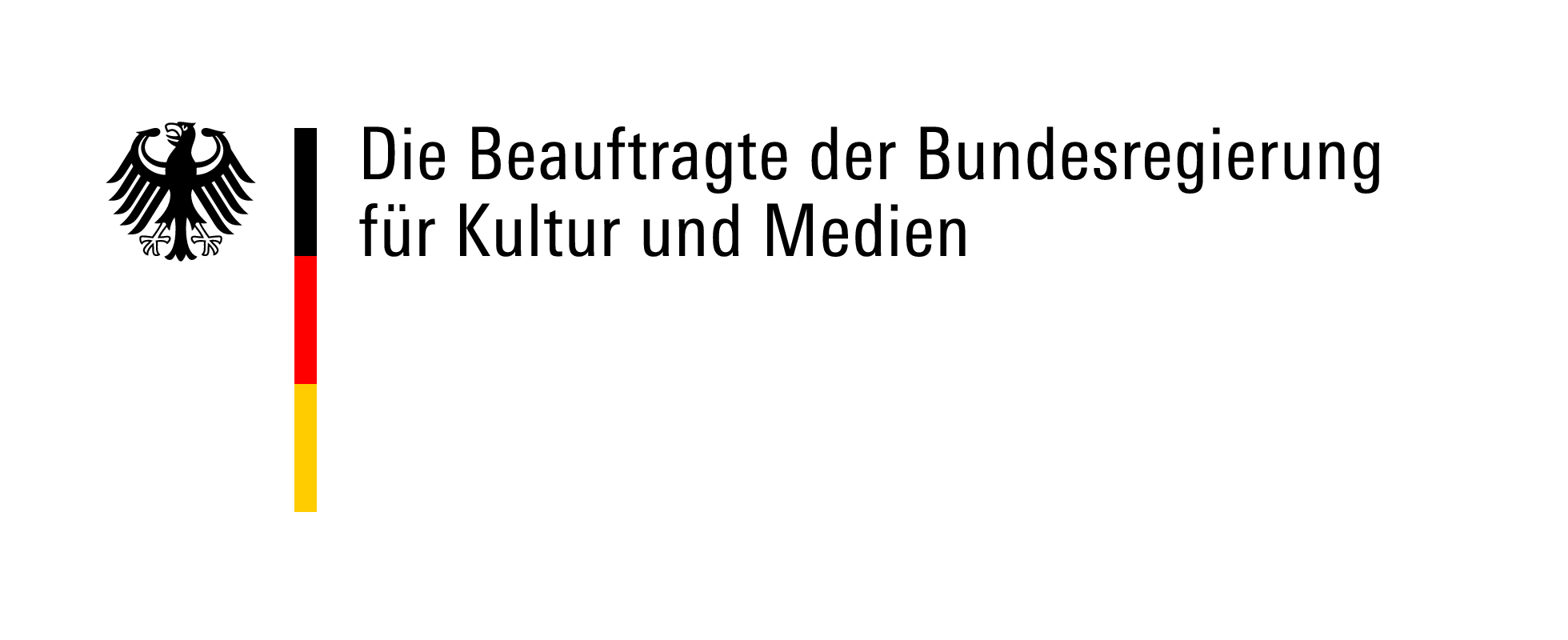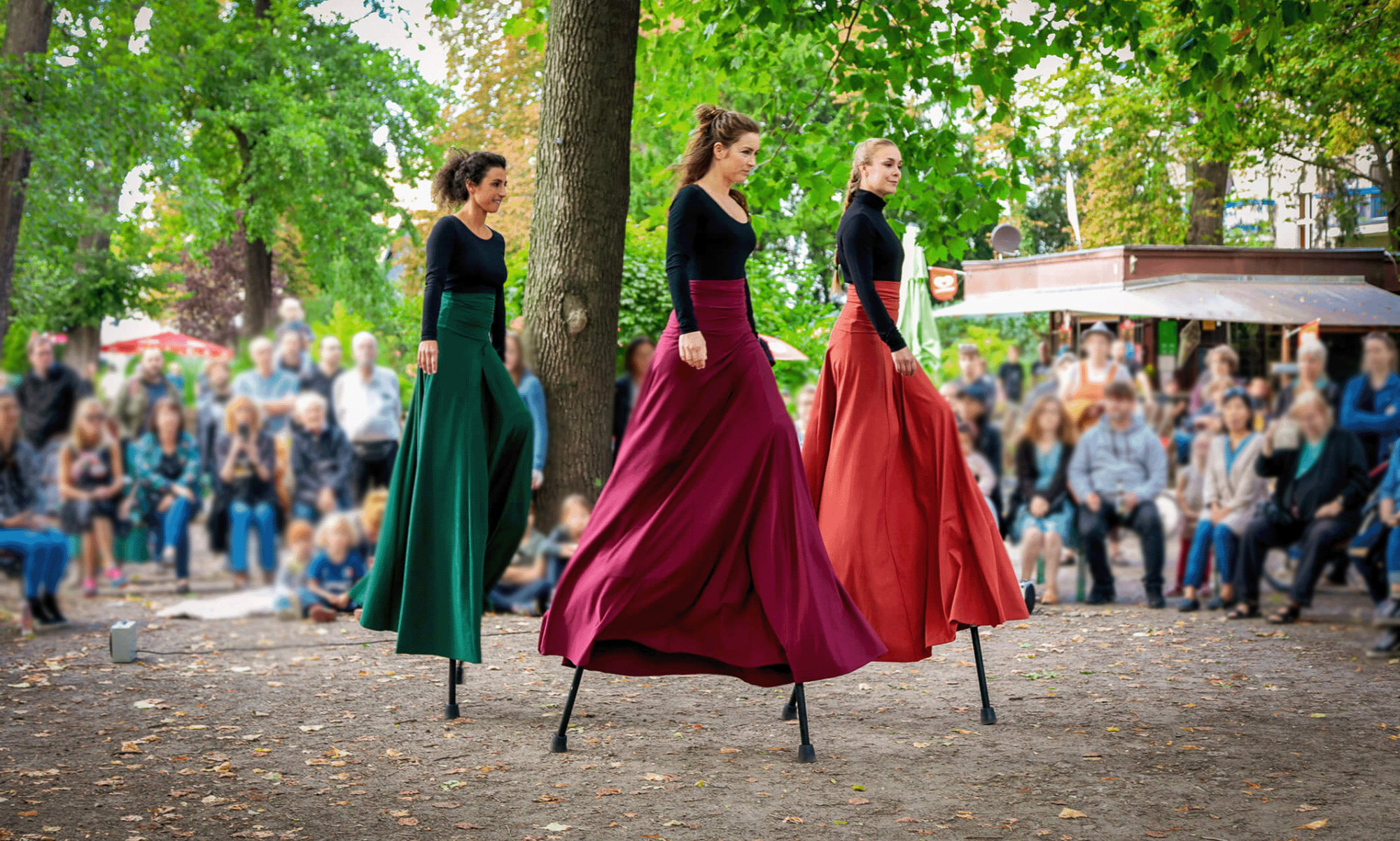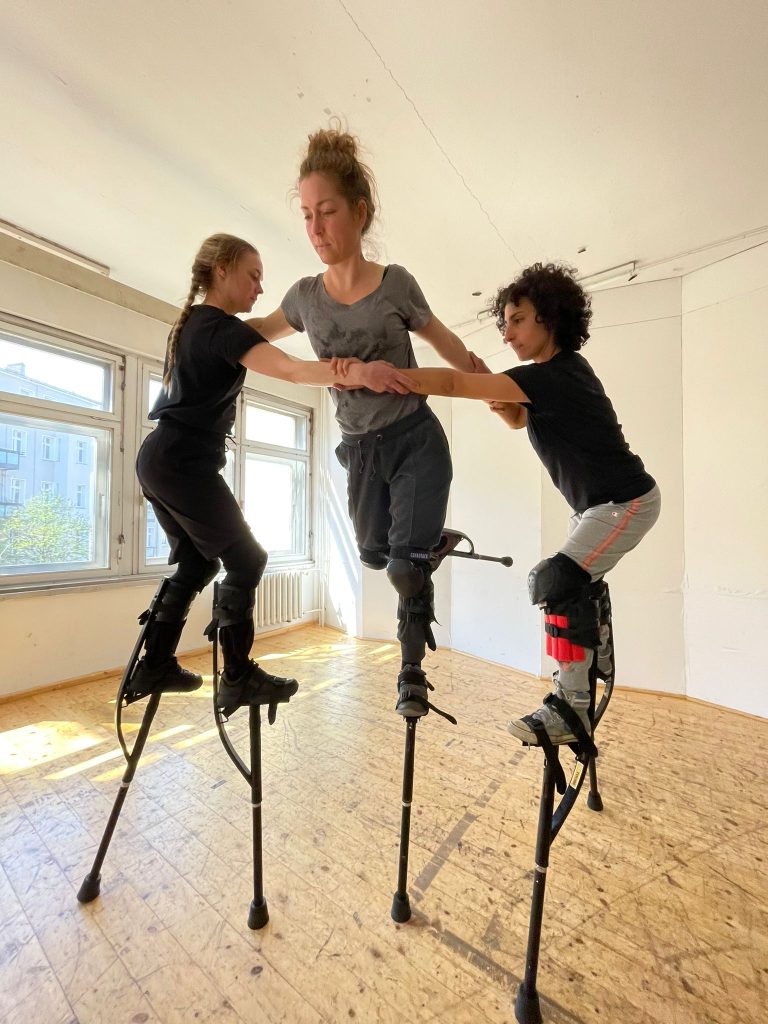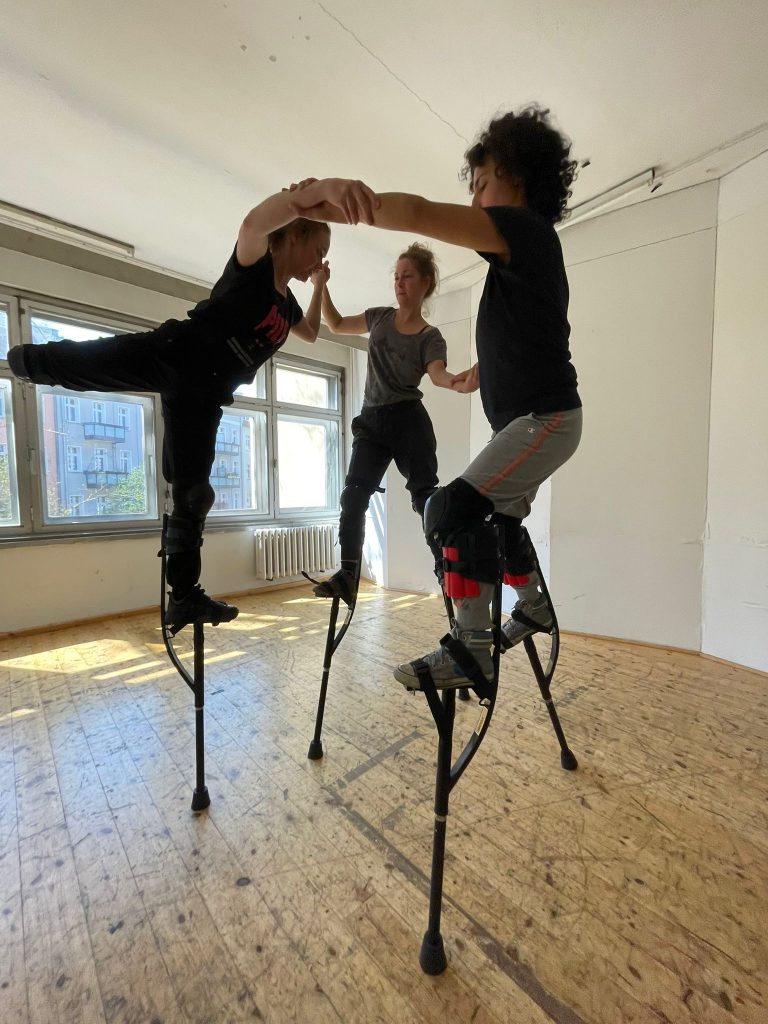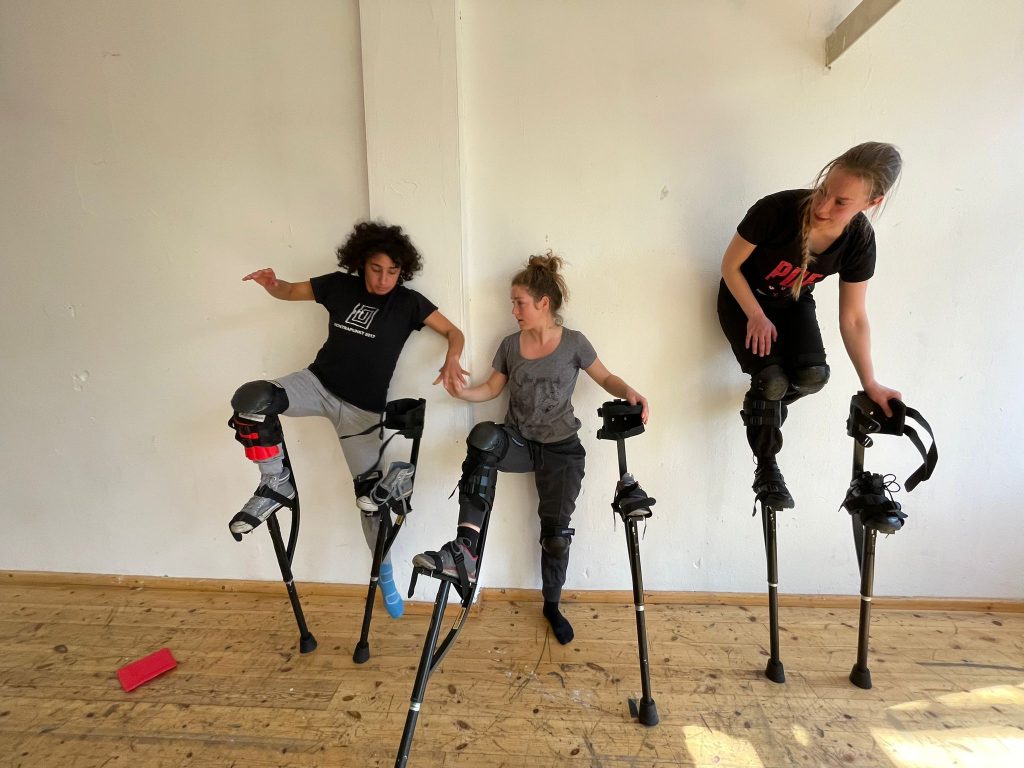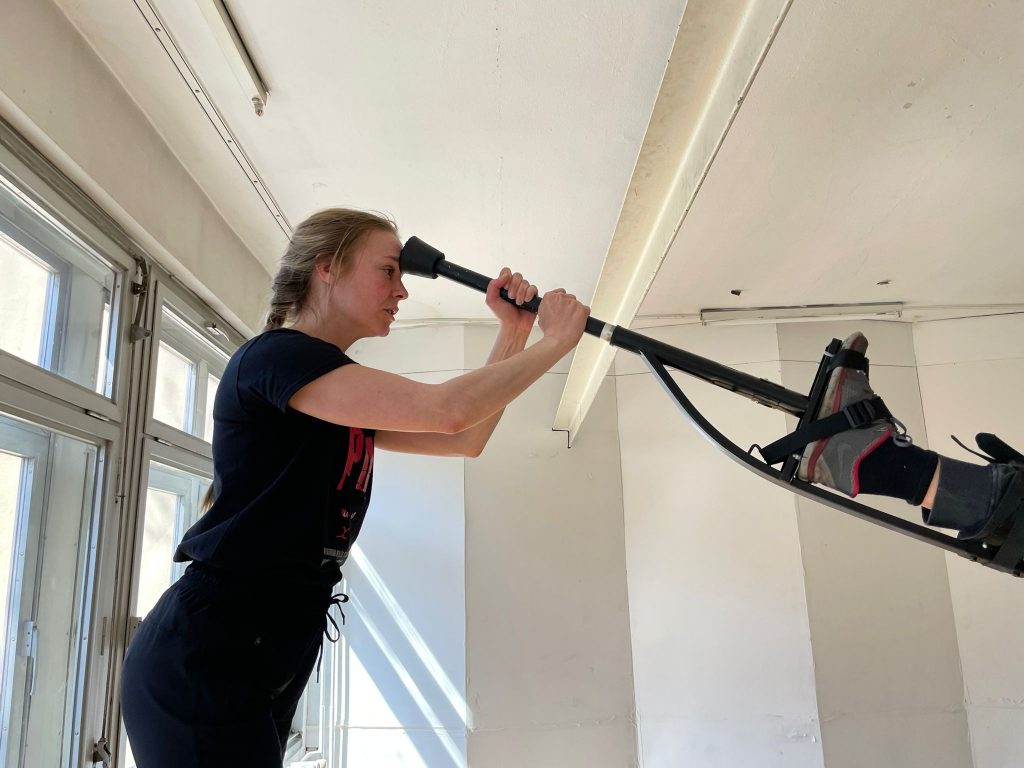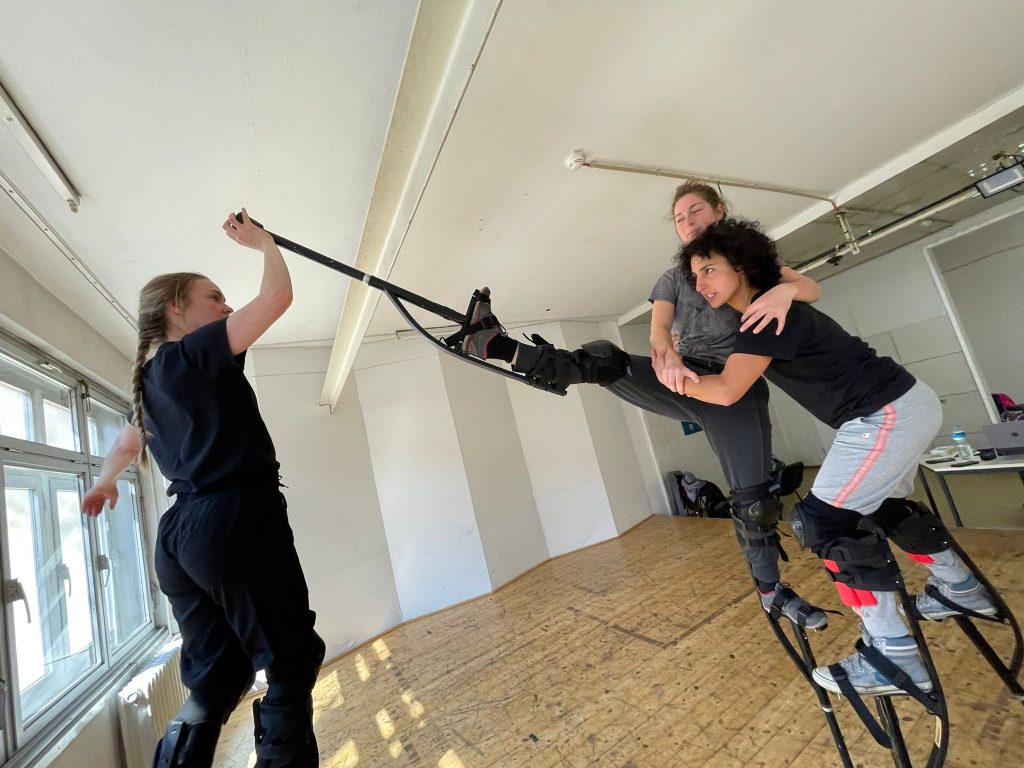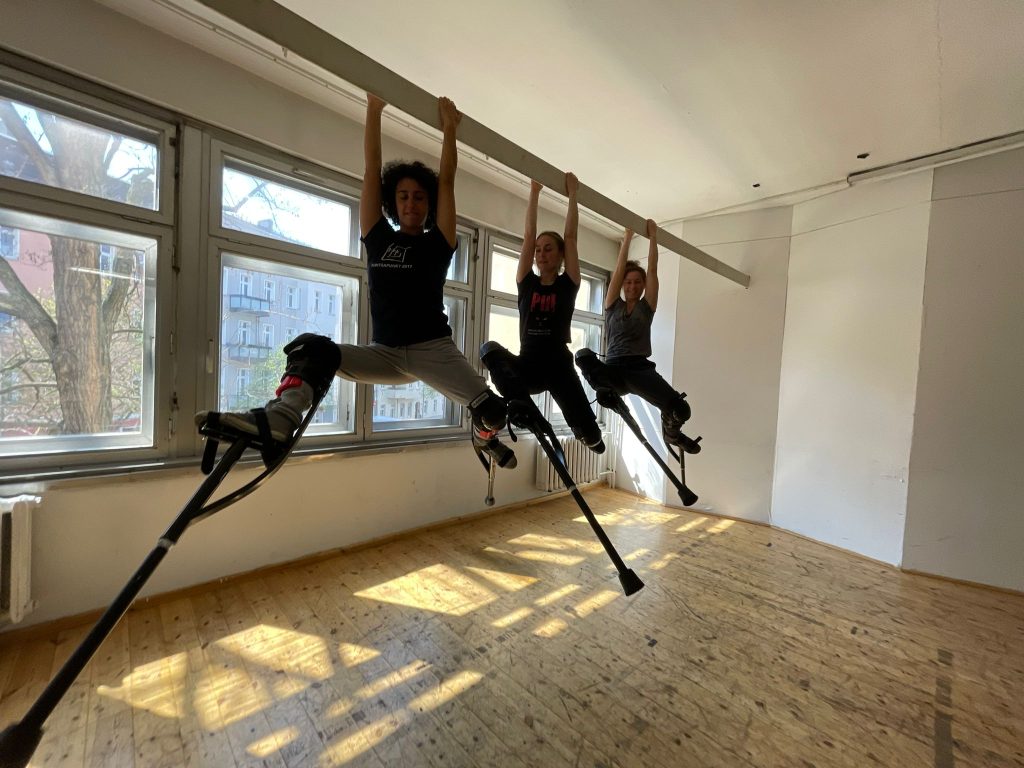Stilt dancing method – Further development of the DANZANKÓ method
Thanks to the second Dis-Tanz-Solo Scholarship, we were able to further develop our DANZANKÓ method and achieve all our project goals as planned in the period from January to June 2023. The temporal distribution of the research changed slightly due to weather and availability of rehearsal space. We invested 50% of our working time.
The first phase (January) consisted of capturing and evaluating our previously researched material. This included sorting the entire documentation (photos, videos as well as theoretical/digital content on our online pinboard Padlet). In addition, we established contacts with other stilt artists to coordinate and plan workshops and artistic exchange.
The second phase (February-March) was a practical testing and further development of the DANZANKÓ method. We trained regularly with different methods that we have researched so far, such as Fluentbody, Viewpoints and Contact-Improvisation. We used different spaces for our training, e.g. dance studios, public places and parks. This way we had to adapt to the conditions of the place. We tried out many new possibilities, e.g. with floorwork, walls/trees as partners, architecture of the place/space, different constellations of one person on the ground and two on stilts, and with movement possibilities that arise e.g. by attaching only one stilt. Since this was the first time that we worked with stilts also in closed spaces, this was a challenge and an opportunity at the same time. The walls initially limited us in the size of our movements and thus directed our focus on how to move spaciously in the interior space with stilts (e.g. if we want to play on a stage).
The third phase (April-beginning of June) consisted of workshops and exchange with other stilt artists:
Workshop I (April 10-14) with Jefferson Pereira da Silva – Brazilian actor, performer, stilt artist and lecturer. With him we researched the slowness of movement on stilts that can result from constant searching for balance. The goal was also to break through the verticality imposed on us by stilts and move in three dimensions. We also worked on the musicality of movement and the integration of partnering into our choreography.
Workshop II (May 22-26) with Jose Bertolero – Peruvian stilt artist. We mainly dealt with stage presence and calmness on stilts and trained various movement qualities based on Rudolf von Laban’s movement qualities (floating, shaking, flowing, hitting, touching, pushing, turning and whipping). We also learned and trained various turning and jumping techniques on stilts and incorporated pauses and stops.
Workshop III (June 6-8) with Benedikt Müller and Lucas A. P. Tanajura from the stilt and street theater Antagon (Frankfurt am Main). First, we exchanged information about the technical properties of our stilts. With their craftsmanship skills, we were able to optimize our stilts for acrobatic movements. In practice, we dealt with various types of specific warm-up and stretching exercises for working with stilts – both individually and in pairs and trios – for effective training and injury prevention. Furthermore, we dealt with various methods of falling and getting up and explored them, for example by using our partners or elements in the room. We tried out various partner acrobatics and contact exercises on the ground and then transferred them to stilts. Finally, we were able to integrate the learned techniques and exercises into improvisation tasks and collect a lot of new movement material.
In the last phase (June), we reviewed, evaluated and summarized all the material (including videos), content and information we collected. At the same time, we trained regularly to expand our newly acquired skills and integrate them into our DANZANKÓ method, which we also want to further develop in the future. Finally, we developed the concept and structure of the workshop that we will lead on August 1, 2023 at the international performance, dance and theater festival Sommerwerft in Frankfurt am Main.
We are very satisfied with the course and results of our research. We have made many new artist contacts and expanded our network. We have deepened our knowledge and skills of moving on stilts and thus further developed our DANZANKÓ method. We have also learned how to handle stilts even more safely and prevent injuries. Our research has also enriched our stilt dance piece DisTouched. In addition, we have developed a lot of new movement material that we want to use for a next production that we plan to create in spring 2024. We hope that our research will contribute to the promotion and dissemination of stilt dance and that we can share our findings with other interested parties.
Photos: Julian Blanco
Funded by the Federal Government Commissioner for Culture and Media within the framework of the initiative NEUSTART KULTUR, aid programm DIS-TANZEN by the Dachverband Tanz Deutschland

